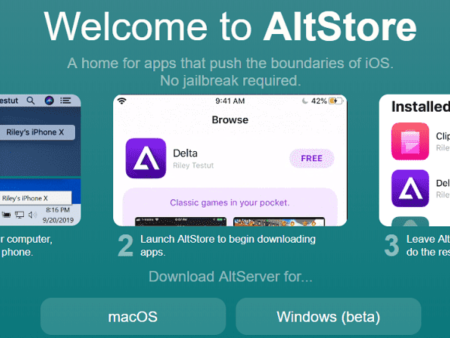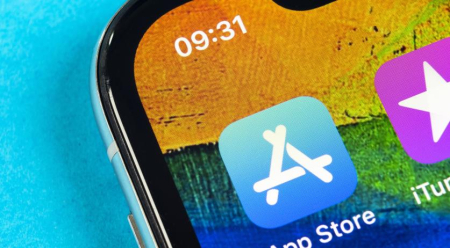In today's highly competitive mobile app market, designing an exceptional user experience is crucial for success, and this requires a deep understanding of mobile app design best practices and the latest design trends.
Related posts
How to increase Google Play downloads and installs free
Best Tips to Increase iOS app installs and downloads on App Store organic
1. Understanding User Experience (UX) for mobile app design
In the fast-paced world of mobile app development, user experience (UX) has become a critical factor for success. UX encompasses all aspects of a user's interaction with an app, from the visual design to the usability of the interface. Designing a positive user experience is not only essential for retaining users but also for creating a loyal customer base.
The principles of user-centered design lie at the heart of designing a good UX. A user-centered approach focuses on understanding the needs and desires of the user and designing the app with those needs in mind. This means that developers must conduct thorough research to gain insights into the target audience and their preferences. This information can then be used to create intuitive, user-friendly designs that meet user expectations.
One key factor in creating a positive user experience is simplicity. Mobile app users have short attention spans and limited patience, so the design must be straightforward and easy to understand. Navigation should be clear, and the interface should be uncluttered, with only essential features and functions.

Understanding User Experience (UX) for mobile app design, Source: asoservice.com
In addition to these principles, designers must also stay up-to-date with the latest design trends and technologies. The mobile app market is evolving, and designers must keep pace with emerging trends to remain relevant and competitive.
In conclusion, creating a positive user experience is critical for the success of mobile apps. By focusing on user-centered design principles, simplicity, ease of use, and keeping up with the latest trends, designers can create app downloads that users will love and continue to use.
2. Mobile App Design Principles
Effective mobile app design principles are essential for creating a seamless user experience that is intuitive, engaging, and easy to use. Here are some key principles to consider when designing mobile apps:
Simplicity: Simplicity is crucial for mobile app design, as it makes the app easy to use and navigate. The interface should be uncluttered and only include essential features and functions.
Consistency: Consistency in design creates a sense of familiarity for users, making it easier for them to navigate the app. Consistency can be achieved through standardizing design elements such as color schemes, typography, and button placement.
Navigation: Navigation is a crucial component of mobile app design. Navigation should be intuitive, and users should be able to access all features of the app with minimal effort.
Visual Hierarchy: Visual hierarchy refers to the way design elements are arranged on the screen, and it plays an important role in guiding the user's attention to the most critical parts of the app. Designers can use visual hierarchy to highlight important features, call-to-action buttons, and other elements.
User-Centered Design: User-centered design puts the user's needs and preferences at the forefront of the design process. Understanding user behavior and preferences can help designers create mobile apps that meet user expectations and exceed their needs.
Accessibility: Mobile app design should be accessible to all users, regardless of their abilities or disabilities. Designers should consider accessibility features such as color contrast, font size, and assistive technologies.
In summary, designing effective mobile apps requires careful consideration of these key principles. Simplicity, consistency, navigation, visual hierarchy, user-centered design, and accessibility are all essential components of mobile app design, and incorporating them into the design process can help increase your app reviews.
3. Color, Typography, and Iconography
Color, typography, and iconography are all essential elements of mobile app design that can help create a consistent and engaging user experience. Here's a closer look at each of these design elements:
Color: A color is a powerful tool for creating an emotional connection with users and establishing brand identity. Choosing a color scheme for your mobile app involves considering your brand identity, target audience, and the purpose of the app. Designers should use color consistently throughout the app and ensure that the chosen colors are accessible to all users.
Typography: It plays an important role in creating a user-friendly interface that is easy to read and navigate. Choosing the right font for your app involves considering legibility, readability, and the overall style of your app. Designers should use a consistent font style and size throughout the app and ensure that the text is easily legible on a mobile screen.
Iconography: Icons are a powerful way to communicate complex concepts and functions in a compact and visually appealing way. Choosing the right icons for your mobile app involves considering their clarity, simplicity, and consistency with the overall design. Designers should use icons consistently throughout the app and ensure that the icons are easily recognizable and intuitive to use.
Color, typography, and iconography are all essential elements of mobile app design that can help create a visually engaging and intuitive user experience. Designers should choose colors, fonts, and icons that are consistent with the overall design and brand identity and ensure that they are accessible and easily recognizable to all users.
4. Mobile App Design Trends
Mobile app design is constantly evolving to meet the changing needs and preferences of users. Here are some of the top trends in mobile app design:
Dark mode: Dark mode has become increasingly popular in recent years, offering a more comfortable viewing experience in low-light environments while also conserving battery life.
Minimalism: Minimalistic designs are becoming more popular as they provide a clean, uncluttered user interface that focuses on the essentials. This approach can help improve usability and make the app easier to navigate.
Personalization: Personalization is becoming more important in mobile app design as users expect apps to tailor their experiences based on their preferences and behavior. This can include customized content, recommendations, and user interfaces.
3D graphics: 3D graphics are becoming increasingly common in mobile app design, particularly in gaming and entertainment apps.
Voice interfaces: Voice interfaces are becoming more common in mobile apps, particularly for hands-free interactions while driving or exercising. This trend is expected to continue as voice recognition technology improves.
Top trends in mobile app design include a dark mode, minimalism, personalization, 3D graphics, and voice interfaces. Keeping up with these trends can help ensure that your app provides an exceptional user experience and stays competitive in the market. You can refer to Microsoft store app reviews for more useful information
5. Responsive Design and Accessibility
Responsive design and accessibility are two important considerations in mobile app design.
This is important because users may access the app from a variety of devices, and a responsive design ensures that they have a consistent experience.
Accessibility involves designing an app that can be used by people, such as visual impairments, hearing impairments, or motor disabilities. This can include features such as high-contrast color schemes, adjustable font sizes, or voice interfaces.
Incorporating responsive design and accessibility into mobile app design can help improve the user experience and make the app more inclusive. It can also improve the app's visibility in app stores, as app stores often prioritize apps that are accessible and have a responsive design.
Overall, responsive design and accessibility are important considerations in mobile app design. By designing apps that can adapt to different screen sizes and are accessible to users with disabilities, developers can create apps that provide a better user experience and are more inclusive.
6. Prototyping and Testing
Prototyping and testing are critical components of the mobile app design process. Prototyping involves creating a preliminary version of the app to test its functionality and gather feedback from users. Testing involves conducting usability tests to identify any issues with the app's design or functionality and address them before the app is released.
Prototyping allows designers to test the app's features and user interface before investing significant time and resources into development. It also allows designers to gather feedback from users and make changes to the app's design and functionality based on their feedback.
Usability testing is another important aspect of mobile app design. It involves observing users as they interact with the app and gathering feedback on their experience. This feedback can help designers identify any issues with the app's design or functionality and make improvements before the app is released.
Overall, prototyping and testing are critical components of mobile app design. By prototyping the app and conducting usability tests, designers can identify and address any issues with the app's design and functionality before it is released, improving the user experience and increasing the likelihood of success.
Conclusion
In conclusion, following the best practices and trends can lead to an exceptional user experience that not only meets but exceeds user expectations, resulting in increased user satisfaction and, ultimately, app success.
Related posts
https://asoservice.com/app-installs-downloads
https://asoservice.com/increase-app-installs-from-google-ads
Thanks so much for reading this article.
Source: https://asoservice.com/














Leave a Reply
Your e-mail address will not be published. Required fields are marked *